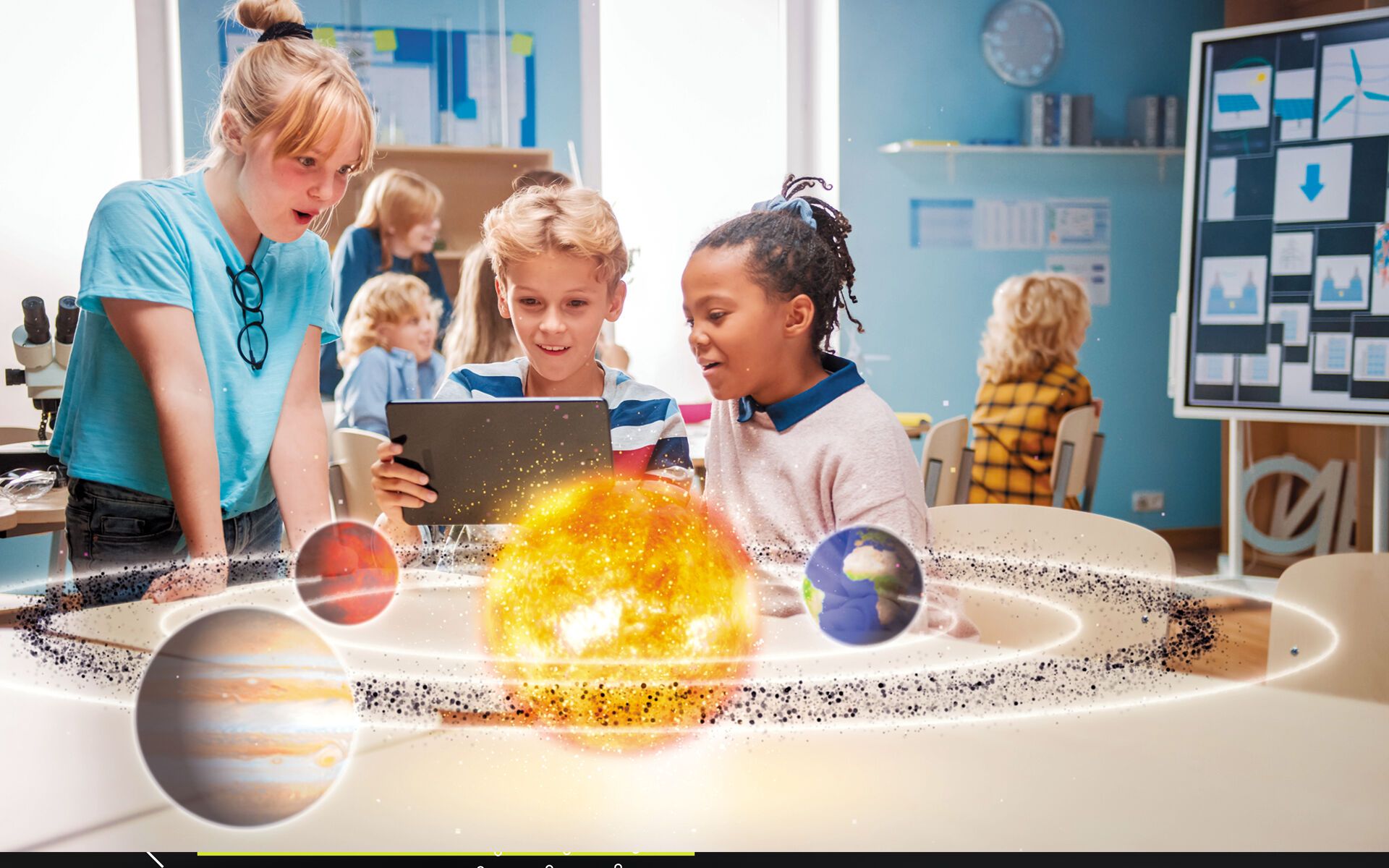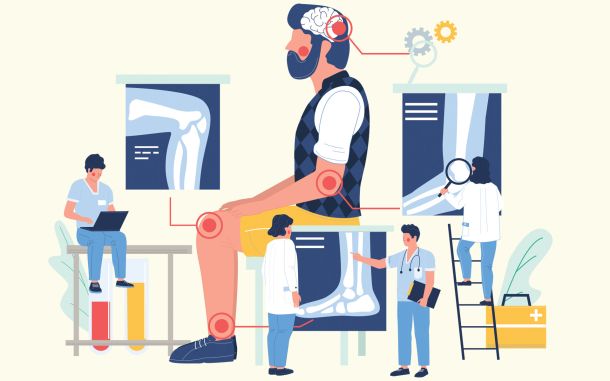Modeling in Science and Education

In This Article
-
Scientific models are used to describe and predict the behavior of real objects or systems and are used in a variety of scientific disciplines, including physics, chemistry, ecology, and the Earth sciences.
-
If you do not know the process of DNA replication beforehand, the initial explanation of it does not help you understand it much. Yet, the diagram makes it easier for you to picture it in your mind.
We are witnessing technological advancements far faster than any other time in history. We are able to use many of them in our daily lives: computers, smart phones, and cars come with new features that are meant to serve us with a more pleasurable and safer use. But many of us use them without fully understanding their functions. For instance, almost all people in a developed country have used a computer in their lives. But the number of people who truly comprehend the nitty-gritty of its aspects is very few, as computers, along with other technologies, are complicated machines.
At the beginning of the twentieth century, science advanced to fields beyond the comprehension of the average person (atomic theory, quantum mechanics, discovery of DNA, etc.). Many scientific fields today require very complex explanations in terms of advanced mathematics and complex scientific arguments, and it has become almost impossible to understand these concepts without prior knowledge. Scientists of our time often cannot explain the results of their research in a way that ordinary people can easily understand.
We cannot expect everyone to understand scientific facts and results. Understanding the general concept of a scientific argument requires at least some relevant educational background. For example, a person watching an astronaut walking on the surface of the Moon on TV must have some basic knowledge to understand why it is not the same as walking on the Earth. If one knows that the gravity on the Earth’s surface (about 9.8 meters per second per second) is different on the Moon’s surface (about 1/6th as powerful or about 1.6 meters per second per second), he or she would know why they were different.
One solution to explain complex scientific theories and discoveries to the lay person is scientific modeling.
Scientific models are used to describe and predict the behavior of real objects or systems and are used in a variety of scientific disciplines, including physics, chemistry, ecology, and the Earth sciences. There are many types of modeling in science and education that have a physical, conceptual, or mathematical representation of a real phenomenon which cannot be easily observed with a naked eye. Especially in learning particular subject matters, they are very useful tools that generate discussion and mental models, improve explanations, make predictions, and provide visual representations of abstract concepts (Treagust, Chittleborough, and Mamiala, 2003).
Generally speaking, models can be grouped into three general types which can be utilized in all science branches: mathematical models, visual models, and computer models. The last-mentioned are sometimes named computational or simulation models as well. Mathematical representations, analogies, physical replicas, equations, theories, words, diagrams, flow charts, 3D models, graphs, and computer simulations, etc. are a few examples of the models which can be compatible with effective learning styles.
In recent years, there has been a growing interest in scientific modeling, with a booming increase in techniques, collection of methods, and meta-theory, in many fields such as education, systems theory, knowledge visualization, and philosophy of science (Frigg and Hartmann, 2009). Especially in the field of education, scientific models have been given more attention in textbooks and other educational sources, as they make it significantly easier for one to imagine things that they cannot physically see in real life. For example, to understand a process like DNA replication, words alone are often insufficient without a diagram or video showing the separation of the leading and lagging strands, the chain of nucleotides added to the separated strands, and the final formation of a complete, double-stranded DNA from a single strand. We cannot picture these processes in our minds, as we can neither see the DNA nor are able to feel its presence in our bodies. The following diagram of DNA replication modeled by Yokoyama (2019) shows the above-explained process:
If you do not know the process of DNA replication beforehand, the initial explanation of it does not help you understand it much. Yet, the diagram makes it easier for you to picture it in your mind.
Within various fields of science, many well-known models in literature can also be cited as examples. They include but are not limited to the billiard ball model of a gas, the centrality models, e.g., inflationary models in cosmology, the Bohr model of the atom, general circulation models of the global climate, evolutionary models in biology, Lotka-Volterra model of predator-prey interaction, agent-based models in social sciences, Mundell-Fleming model of an open economy, general-equilibrium models of markets in their respective domains. While some of these models are developed to present various complex scientific cases in a digestible form, some are also developed to make predictions. Climate models and weather models in Meteorology, and the models used in semi-empirical calculations in Chemical Physics can be given as examples among many others.
What are the criteria for a successful model? Undoubtedly, the proposed model should correspond with the scientific concept/process in which it is used; it has to be straightforward in terms of explaining its ideas.
The scientific method is about (i) making observations, (ii) searching for a pattern (or patterns) in the observations, (iii) developing ideas, (iv) testing them for proper explanations; in addition to these, the purpose of scientific models should also include sharing the findings with the wider community. The last is indeed the goal of scientific models and where they are most needed, as it is the community that needs a better understanding of the concept being presented, not the researcher.
To conclude, scientific models serve their purposes best when they are realistic, offer predictions, and explain observations. Scientific ideas should be represented by various means such as graphs, drawings, three-dimensional structures, simple words, and equations. While structuring these tools, a scientist must make the results accessible by lay people. That is how the modeling will find its use in communicating the concepts/processes to other scientists and ordinary people. What is more, the advancement of science depends on the communication between both current and future researchers. Scientific models can disseminate knowledge across generations in a comprehensible fashion; their development is said to be of utmost importance.
References
Treagust, D.F., Chittleborough, G.D., and Mamiala, T.L. (2003). The role of submicroscopic and symbolic representations in chemical explanations. International Journal of Science Education, 25 (11), 1353-1369.
Frigg, R. and Hartmann, S. (2009). Models in Science", The Stanford Encyclopedia of Philosophy (Summer 2009 Edition), Edward N. Zalta (ed.).
Yokoyama 2019, Copying the Recipe of Life, diagram by Maho Yokoyama, News Medical, accessed 8 October 2022, <https://www.news-medical.net/life-sciences/Mechanism-of-DNA-Synthesis.aspx>.









